
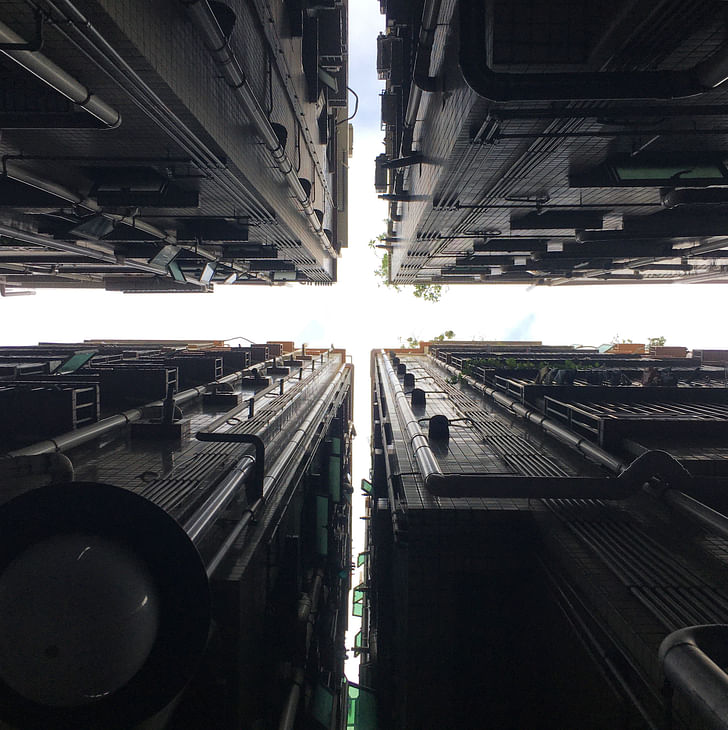
The past, present, and future narrative of Shenzhen offers rich ground for architectural thought. The megacity, which emerged from the remote Chinese countryside over 40 years, has captured the imagination of urbanists seeking to understand its rise, architects seeking to contribute to its lively urban fabric, and national governments seeking to replicate the "miracle of Shenzhen" and its associated economic riches in their own country. However, despite the prevailing narrative of a highly-planned "instant" metropolis springing from nothingness, Shenzhen's history is more complex, more expansive, and more grounded in localism, than is commonly noted. Meanwhile, as the city continues its meteoric urban expansion, local and international architects, curators, and researchers are tasked with weaving the next chapter of Shenzhen's story; guided by forces of innovation, culture, climate, and geopolitics.
In recent decades, Shenzhen has served as an intriguing case study in rapid urban development. Once a rural community dependent on an agricultural and aquacultural economy, the population of Shenzhen grew from 100,000 people in 1979 to over ten million by the mid-2000s, and over twenty million in the present day. As the city’s population has increased, so too has its economy. Shenzhen’s GDP grew by an average of 40% year-on-year from 1980 to 2000, rising from 0.15 billion yuan to over 20 billion yuan. Today, this GDP figure has increased a further tenfold, now sitting at 2.77 trillion yuan.
This exponential growth can be attributed, at least in part, to the decision of Deng Xiaoping’s national government in 1980 to designate Shenzhen as one of three Special Economic Zones (SEZs). The creation of SEZs in China in the 1980s was driven by a need to inject foreign capital into an economy which, before that point, had remained largely closed-off. Although this top-down national policy was instrumental, and is often the sole creditor, in creating the conditions for Shenzhen’s subsequent boom, some experts believe it was not the sole actor. In her 2020 book “The Shenzhen Experiment: The Story of China’s Instant City,” Chinese urbanism expert Professor Juan Du aligns this top-down approach with a citizen-led, bottom-up element.
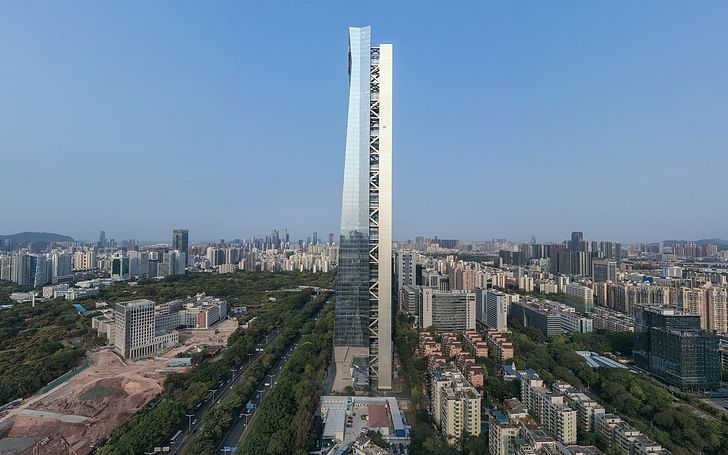
“The motivations of local governments and individuals played an influential, and as yet largely unheralded, role in the development of the Shenzhen SEZ,” writes Du, who is currently the Dean of the Daniels Faculty of Architecture, Landscape, and Design at the University of Toronto, and an Honorary Professor at The University of Hong Kong. “The physical reality of the Shenzhen SEZ was shaped by the purposes of many, not one – from Deng Xiaoping to the tens of millions of migrants who arrived in Shenzhen with little or no resources and begin their lives anew.”
Shenzhen’s recent rise is less about absolute creation, and more about rapid evolution.
A dispute with the prevailing narrative of Shenzhen as a product primarily of national policymakers is one of several identified by Du. Today, the dominant story of Shenzhen is of a modern urban landscape painted onto a blank canvas of empty rural coastline; a truly global, instant metropolis, hailed as a “miracle city” by its admirers, and a “generic city” by its detractors. For Du, Shenzhen’s emergence over the past 40 years is significantly more grounded in local elements, one which is “highly specific and extremely complex in terms of its social, cultural, political, geographical, and historical context.”
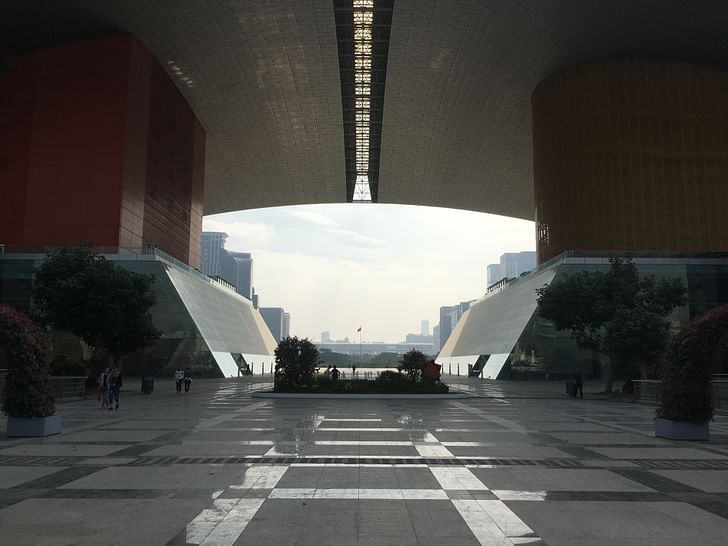
By uprooting the common narrative of Shenzhen being established without precedent in 1979, and instead grounding the city in a local context, Shenzhen’s recent rise is less about absolute creation and more about rapid evolution. “Shenzhen is not a place without history, as is commonly reported,” Du explains. “Rather, Shenzhen has inherited important social networks and industrial traditions from thousands of years of immigration and emigration, political administration, agriculture and aquaculture production, transnational maritime trade, and changing social and political norms, as well as from centuries of reforms in education, culture, trade, and industry.”
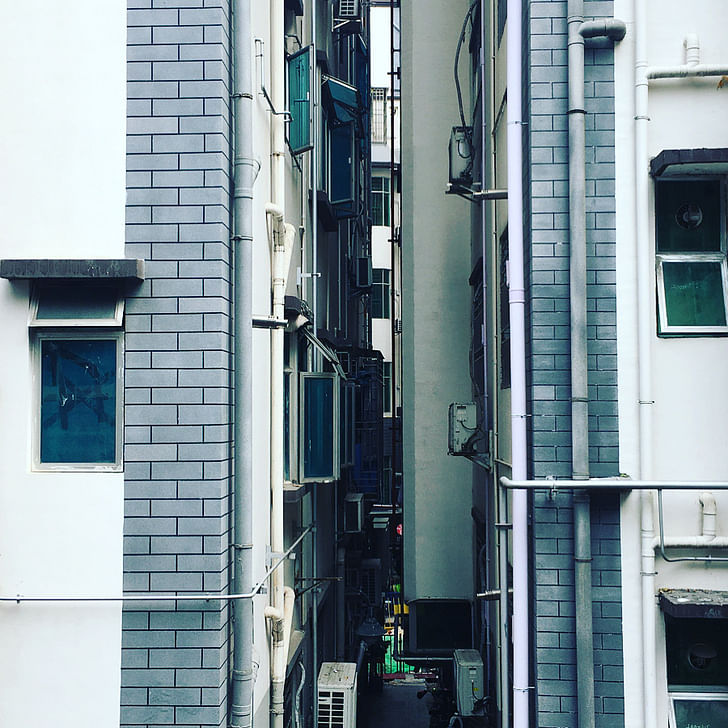
The most compelling evidence of Shenzhen’s grounding in localism still exists in the form of the city’s three hundred “Urban Villages.” These tightly-packed clusters of mid-to-high-rise buildings, which collectively house almost half of Shenzhen’s population, can be traced back to approximately two thousand former agrarian historic villages before Shenzhen’s exponential growth. Locally referred to as “handshake buildings” due to the ability of residents to reach out their high-rise windows and shake the hand of their neighbor living across the street, these ad-hoc clusters were often built without proper oversight, or even permission.
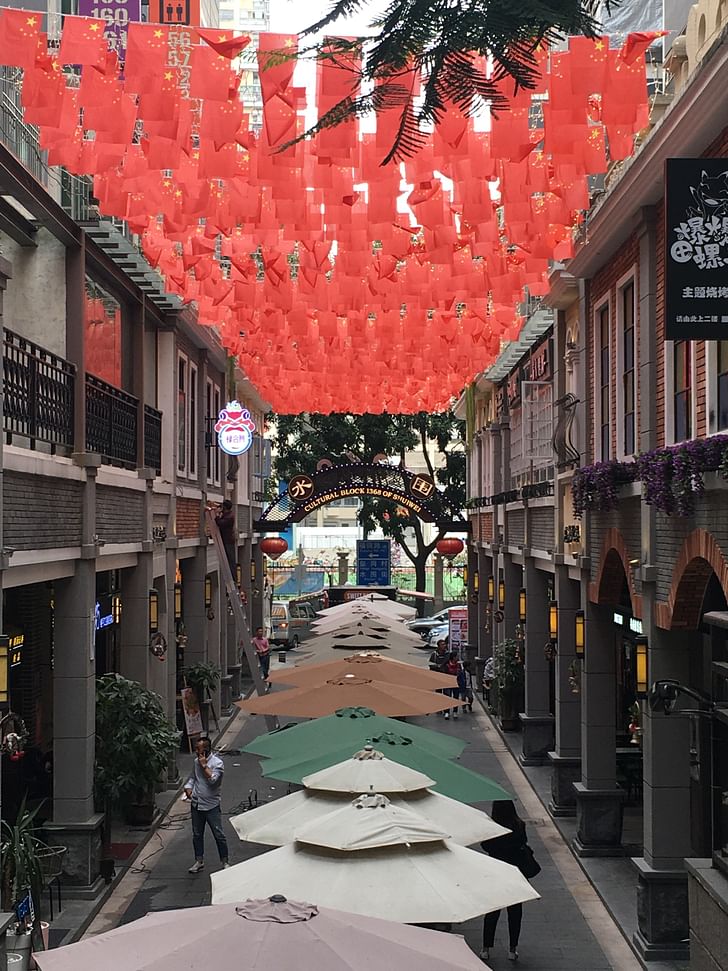
Today, the Urban Villages offer a disorientating though charming deviation from the extensively planned sea of glass and steel which has come to define modern Shenzhen. Their existence, once hidden by governments and tourist boards alike, has not only become a source of fascination for architects, urban planners, and biennales, but also defines Shenzhen not purely as a ubiquitous “instant city,” but one which exhibits the familiar vernacular roots and dependencies shared by cities across the world, and across history.
While the skyline of Shenzhen could perhaps be repeated elsewhere, the actual operation of Shenzhen is less easily replicated.
For researchers such as Du, decoupling Shenzhen’s reality from the prevailing narrative of its founding is not purely about correcting the historical record. Across the world, the attribution of Shenzhen’s undeniable economic and urban success to rapid policy changes at a national level, with little attention to local variables, has captured the imagination of governments in developing countries who are seeking to replicate Shenzhen’s story. “Shenzhen is cited in new town planning documents of developed countries, referenced in World Bank reports for developing economies, and courted by various government bodies around the world,” Du explains. “Yet while the skyline of Shenzhen could perhaps be repeated elsewhere, the actual operation of Shenzhen is less easily replicated. While Shenzhen inspired the creation of additional economic zones in China and around the world, no other SEZ has ever been able to match its unprecedented economic success.”

The proliferation of SEZs across the world in the wake of Shenzhen’s success cannot be understated. In 1975, there were approximately 79 SEZs in operation around the world. Today, this figure has increased to 5,400, spanning cities across Asia, South America, and Africa. “It is worrisome that the Shenzhen SEZ model is regarded as a prototype ready for rapid application when its contours are not yet fully understood,” Du laments. “The idea that Shenzhen is a replicable model reinforces the assumption that cities can be politically planned and socially engineered from scratch. In fact, national policies based on misconceptions about Shenzhen’s development history could have devastating consequences in other countries.”
Between 2016 and 2018, Shenzhen constructed more tall buildings over 200 meters than the entire United States.
While the question over Shenzhen’s replicability remains unanswered, few could dispute that the city itself has proliferated an immense portfolio of iconic architectural works in a short timeframe. According to the CTBUH, between 2016 and 2018, Shenzhen constructed more tall buildings over 200 meters than the entire United States, and twice as many as any other Chinese city. Over the past 20 years, much of the city’s landmark development has taken place around the Futian Central District, and the arterial Shennan Road running through it from east to west. Over half of the landmark buildings in this area were designed by international architects, including a large number of prominent firms. Today, this expansion continues along Shennan Road, with dozens of European and American architects currently engaged in projects along the route.
The influx of international architects to the city has been complemented by an evolving interest in the city by urban theorists and researchers. For architectural historian, writer, and curator Ole Bouman, Shenzhen represents a physical manifestation of the power of ordinary citizens to create and support a thriving urban environment. “More than any ideological aspiration, policy-making or city branding, Shenzhen is, first of all, a massive fact on the ground, created by its immigrants,” Bouman told Archinect. “ I am deeply impressed, not only by the sheer energy and drive of so many people getting on their feet in a new city, but also how this urban miracle has managed to scale itself time and again.”

Bouman belongs to a generation of architectural figures who have complemented Shenzhen’s exponential urban growth with a theoretical infrastructure that uses the city as a backdrop to investigate, question, and generate perspectives on urbanism; for Shenzhen and the wider world, for the present and future. In 2013, Bouman curated the Urbanism/Architecture Bi-City Biennale of Shenzhen/Hong Kong (UABB), which is now the most visited architectural biennale in the world. For the 2013 edition of the event, Bouman redeveloped an industrial plant into the “Value Factory,” which hosted a variety of international cultural institutions including MoMA and the V&A. Today, Bouman is the Founding Director of the Design Society, which opened in Shenzhen in 2015 as China’s first dedicated cultural design hub.
Shenzhen knows its uniqueness and has developed a sense of responsibility to maintain and even expand this status
“If I had to characterize my years in Shenzhen as part of a bigger story of the city, I would say that when I arrived about 10 years ago, the phenomenon of the vibrant arrival city was still largely unknown to itself,” said Bouman. “Today this has completely changed. Shenzhen knows its uniqueness and has developed a sense of responsibility to maintain and even expand this status. On the one hand, this opens opportunities for innovation, excellence, and brilliance. On the other, it may become a heavy historical burden, to meet the status deserved by unconscious hard work, now to be defended by very conscious policymaking and symbolism.”
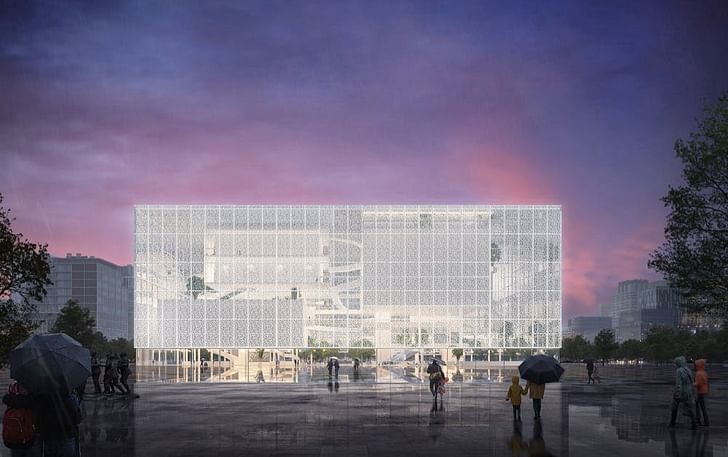
Today, Shenzhen’s skyline features the work of some of the world’s most acclaimed architects, including Foster+Partners, KPF, OMA, Morphosis, Grimshaw, and MVRDV. Bouman’s characterization of a city determined to expand its architectural status appears to have been borne out in late 2018, when the city announced plans to build 10 new landmark cultural facilities, including five museums. Over the past three years, this initiative has resulted in an array of intense international interest from leading design firms, and a seemingly endless supply of ambitious architectural visions. In 2021 alone, this cultural framework has given rise to a Maritime Museum by SANAA, a Science and Technology Museum by Zaha Hadid Architects, a Natural History Museum by 3XN, B+H, and Zhubo Design, a Reform and Opening-Up Exhibition Hall by Sou Fujimoto and Donghua Chen Studio, and the Shenzhen Bay Culture Park by MAD Architects.

“I think these announcements are proving my point,” says Bouman. “The critical mass of premier league architecture, deployed to construct major civic monuments, is both sign of a maturing and self-confident city, and a risk to believe too much in hardware, monuments and global fame as the pillars of continued reputation. You see a similar situation in high-end urban planning: ambitious in scale, sometimes slightly more dubious in securing a truly urban culture, with rich multifaceted program. I hope that the following years will witness a rapid catch-up of lively urban curation, that will keep Shenzhen a place of civic experiences more than any set of urban objects.”
Shenzhen’s urban expansion suggests that the city possesses a nimble ability to adapt to the needs and desires of a modern metropolis; habits which may yet undergo a renaissance in a post-COVID world.
Like all cities, Shenzhen’s future is fraught with variables. A powerhouse of technology and design, Shenzhen’s urban expansion suggests that the city possesses a nimble ability to adapt to the needs and desires of a modern metropolis; habits that may yet undergo a renaissance in a post-COVID world. In tandem, Shenzhen’s future will undoubtedly be impacted by that of its financial superpower neighbor Hong Kong. In another measure of the city’s meteoric rise, 2018 saw Shenzhen surpass the GDP of Hong Kong for the first time, a trend which has now solidified. In the context of a global clash of ideologies between China and the West, Shenzhen’s architectural marvels take on a new meaning; whether it be tangible symbols of China’s economic growth and ambition in one context, or a testament to the power of international collaboration in another.
“Shenzhen has major challenges ahead,” says Bouman. “As an anchor in a region-wide conception of modernization, as a demonstration zone to show the ingenuity of China to the world, but also as a city that has to deal with very mundane ecological challenges on a massive scale.”
“The combination of these stakes makes Shenzhen an exciting place to observe.”
Niall Patrick Walsh is an architect and journalist, living in Belfast, Ireland. He writes feature articles for Archinect and leads the Archinect In-Depth series. He is also a licensed architect in the UK and Ireland, having previously worked at BDP, one of the largest design + ...
No Comments
Block this user
Are you sure you want to block this user and hide all related comments throughout the site?
Archinect
This is your first comment on Archinect. Your comment will be visible once approved.